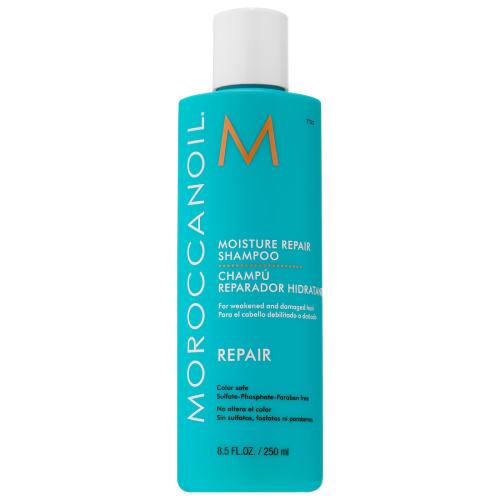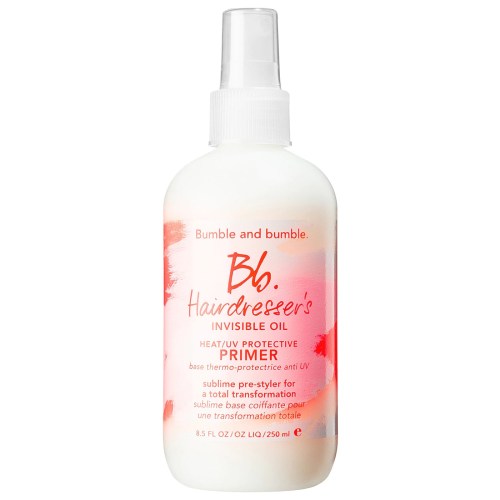Keeping your hair moisturized is no easy feat. Aside from the fact that certain textures are more prone to dryness to begin with (looking at you, curly-haired friends), on any given day, it feels like there are a zillion different things threatening our hair’s hydration levels—like the sun, hot tools, shampoos with heavy detergents, excessive brushing, and chemical treatments, to name a few. And because dry hair can take on a few different characteristics, it may not be immediately obvious that your strands are dying of thirst… which means you’re likely ignoring the root cause of some of your most annoying concerns.
Experts in This Article
celebrity hairstylist and founder of Phenix Salon Suites
trichologist, hair expert, and CEO of Colour Collective
Lauren Paglionico is a hairstylist and owner of LRN Beauty.
To help you get things back on a well-hydrated track, we chatted with Lauren Paglionico, hairstylist and owner of LRN Beauty, Gina Rivera, celebrity hairstylist and founder of Phenix Salon Suites, and Kerry Yates, trichologist at Colour Collective. Keep reading for the tell-tale signs that should tip you off to the fact that your hair needs more moisture, plus exactly the steps you need to take to properly quench those strands.
4 Signs your hair needs more moisture
1. It feels dry, brittle, and breaks more easily
Moisture gives your hair elasticity. When it’s lacking, you’ll notice that when you pull on your strands, they won’t be able to bounce back into their natural shape quite so easily—and they may even break off. “If the hair becomes dry-feeling, brittle, and is prone to breaking, chances are your hair needs more moisture,” says Rivera. If you’re noticing general dryness or a slew of unexplained split ends, it’s a clear sign that your hair is thirsty.
2. It looks dull or brassy
“Luster and shine are also measures of moisture,” says Rivera. “If the hair looks dull and flat, chances are it’s in need of moisture.” This becomes particularly pertinent during the summer months, when oxidation from chlorine and sun exposure can strip the hair of moisture and make it look washed out or brassy.
3. It’s frizzier than usual
Frizz is your hair’s way of telling you that it needs to be hydrated. To get a little science-y for a second, the outer layer of your hair is made up of cuticles that overlap with one another (sort of like shingles on a roof) to control how much moisture is allowed to penetrate your strands. When your hair is healthy, the cuticles sit comfortably on top of each other. But when it’s dry, they separate and raise in an attempt to draw in more moisture from the air—which means that dehydrated strands don’t stand a chance staying frizz-free in humid weather.
4. It tangles easily
While certain hair textures are naturally more prone to tangling, a lack of moisture could be making things worse. Dry hair can get easily matted, as strands are more likely to catch on each other when they’re dry and rough as a result of all those raised cuticles.
How to properly moisturize your hair
1. Stack your routine with hydrating ingredients
First things first, you’ll want to load up on hydrating ingredients that will give your hair the moisture it needs. This means stacking your routine with sponge-like humectants—like honey, hyaluronic acid, and aloe vera—which draw water into your hair and lock it into place. Rivera notes that you can also benefit from using formulas that include amino acids and other proteins, which work with your hair’s natural proteins to help lock in moisture. She also suggests using vitamin B, which helps to synthesize strand-strengthening proteins, and argan oil, which is rich in hair-hydrating fatty acids.
“Also, always select sulfate-free products, as they are essential for maintaining the proper balance of moisture,” says Rivera. While sulfates can act as effective cleansing agents, they can strip your hair of natural oils, so opting for a sulfate-free shampoo is your best bet for avoiding unnecessary dryness.

Moroccanoil Moisture Repair Shampoo — $26.00
2. Use a deep conditioner
Deep conditioning infiltrates the hair shaft to hydrate your strands, improving elasticity to prevent breakage and restore health to damaged hair. Implementing a deep conditioning treatment every week or two can show drastic and long-lasting results, says Paglionico.
For an even deeper conditioning, try hair slugging. The process (which, yes, is basically skin slugging for your hair) involves saturating your hair in a moisturizing formula, like an oil, then wrapping it in a sock and letting it sit overnight to let the ingredients penetrate more deeply. Yates suggests doing this once a month “to keep your hair more balanced.”

Briogeo Don't Despair, Repair!™ Deep Conditioning Hair Mask — $39.00
3. Protect your hair from heat
If you’re using a blowdryer or hot tool on your hair, a heat-protectant should be a non-negotiable. These formulas add a barrier between your hair and whatever tool you’re using, which helps to seal in moisture and prevent dryness and damage. Rivera also recommends using infrared tools, as this type of tech helps to “lock in your own natural moisture and oils, leaving the hair healthy.”

Bumble and bumble Hairdresser’s Invisible Oil Heat & UV Protective Primer — $32.00

Zuvi Halo Hair Dryer — $349.00
4. Take care not to overdo it
Keep in mind that there is as such thing as too much moisture, which will leave you with more problems than you started it. On the one hand, overdoing it can lead to greasy, flat hair and a stinky scalp—and if things get really out of control, you may notice mildew or fungus growing in your hair because it has too much moisture. On the other end of the spectrum, too much moisture may (ironically) make your hair dry and staticky. “This is because the hair has a limitation on how much moisture it can hold before it won’t penetrate the hair anymore,” explains Rivera.
For more tips on how to hack your routine to avoid damage, check out the video below.
Want even more beauty intel from our editors? Follow our Fineprint Instagram account) for must-know tips and tricks.
Sign up for the Well+Good SHOP Newsletter
Get exclusive deals on wellness, beauty, fitness, and food products that have been hand-picked by our editors.
Got it, you've been added to our email list.











